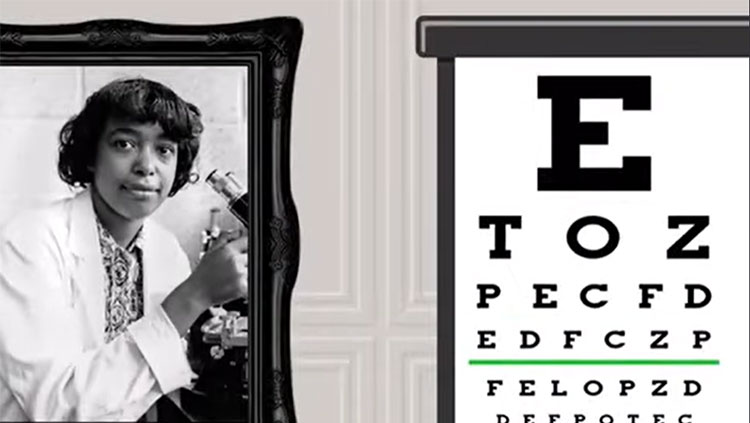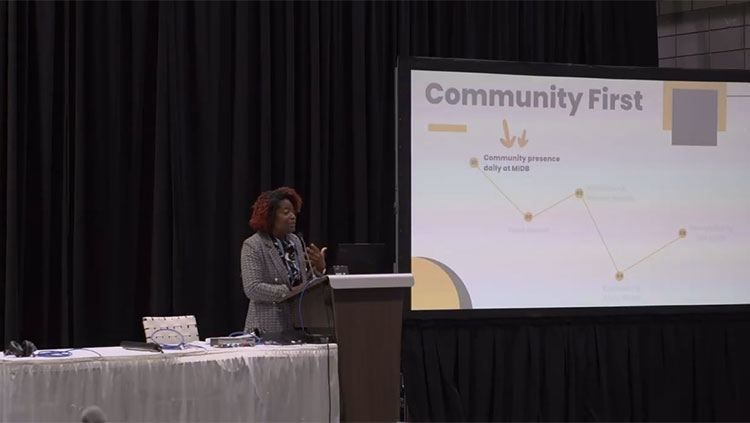A Manhattan Project to Map the Brain?
- Published27 Feb 2013
- Author Dwayne Godwin
- Source BrainFacts/SfN
When anyone wants to support science, I’m in. These are trying times, when the scientific enterprise is facing severe cuts as budget sequestration looms, creating even more uncertainty and angst among research institutions – not to mention young scientists who might be questioning whether they want to enter a career with such a high level of risk.
So I was as attentive as Wile E. Coyote is to the Roadrunner when President Obama did three unusual things during the State of the Union Address:
1) He gave a full-throated endorsement of the value of science, saying, "If we want to make the best products, we also have to invest in the best ideas. Every dollar we invested to map the human genome returned $140 to our economy."
2) He mentioned human brain mapping, too. "Today, our scientists are mapping the human brain to unlock the answers to Alzheimer's; developing drugs to regenerate damaged organs; devising new material to make batteries ten times more powerful. Now is not the time to gut these job-creating investments in science and innovation. Now is the time to reach a level of research and development not seen since the height of the Space Race. "
3) In the State of the Union he even presented what I am pretty sure is the first functional brain map ever shown by a President. This foreshadowed the announcement a few days later that the President will urge Congress to approve a project to map the brain, the Brain Activity Map, which is estimated to cost $3 billion.

This is, by a cost definition, "big science ". The effort to build the first atomic bomb, called the Manhattan Project, cost ~$2 billion at the time (which would be about $22 billion if it were done today). A more current estimate of the cost of big science is the cost of the Human Genome Project, which came in at about $3.8 billion, or the Mars Curiosity mission, weighing in at $2.5 billion.
Sounds like a lot, right? Let me convince you that it isn’t a lot. By comparison, $3 billion is close to what the U.S. would spend to stay in Afghanistan – for four weeks. As a percentage of Gross Domestic Product of the United States (a measure of goods and services generated by the U.S. which stands at about $16 trillion) it’s a paltry .02%. And the Brain Activity Map project is projected to play out over 10 years. It’s about 10% of the NIH budget for one year, which is around $31 billion. As the President pointed out the return on these investments over time more than pays for them, and let's not forget – these projects are the means by which we understand and find cures for diseases that may be developing in you or me as you read this.
$3 billion doesn’t sound very big now, does it? But wait!
Let us set aside for a moment the challenge that any President has in surmounting congressional approval for increased government spending – these days, this is no sure thing, no matter how small of a percentage it may be. And, let’s ignore the fact that the amount of funding being discussed is about double the projected loss (as much as $1.5 billion from NIH*) if sequestration takes effect. We really need to answer a basic question.
Will this $3 billion be: a) an increase in funding for an area of science that sorely needs it, or b) support for one, high profile effort at the expense of other scientifically valid projects?
The first I can get behind, but with such a small pie, the second inspires great caution. Think about it this way: $300 million per year would fund more than 700 conventional research grants, at a time when NIH budgets are flat and we are facing half that amount in sequestration cuts. This is a time when excellent proposals targeting brain diseases aren't being funded.
When I put that into my own personal brain activity map, it spits out a result that gives me great pause. Ultimately, this may be the cold water that short circuits the political connectome.
I’m hopeful that in the weeks and months to come these basic questions will be answered. I want to be behind a project that will generate the kind of excitement that took us over the Moon. And if you don’t like the idea of the massive cuts to research I’ve described, here’s a link where you can make your voice heard.
* In full disclosure, my own lab is funded in part through NIH. So I am definitely biased toward seeking cures for diseases like brain cancer, epilepsy, PTSD, CTE, Alzheimer's and Parkinson's.
CONTENT PROVIDED BY
BrainFacts/SfN
Also In Supporting Research
Trending
Popular articles on BrainFacts.org


















